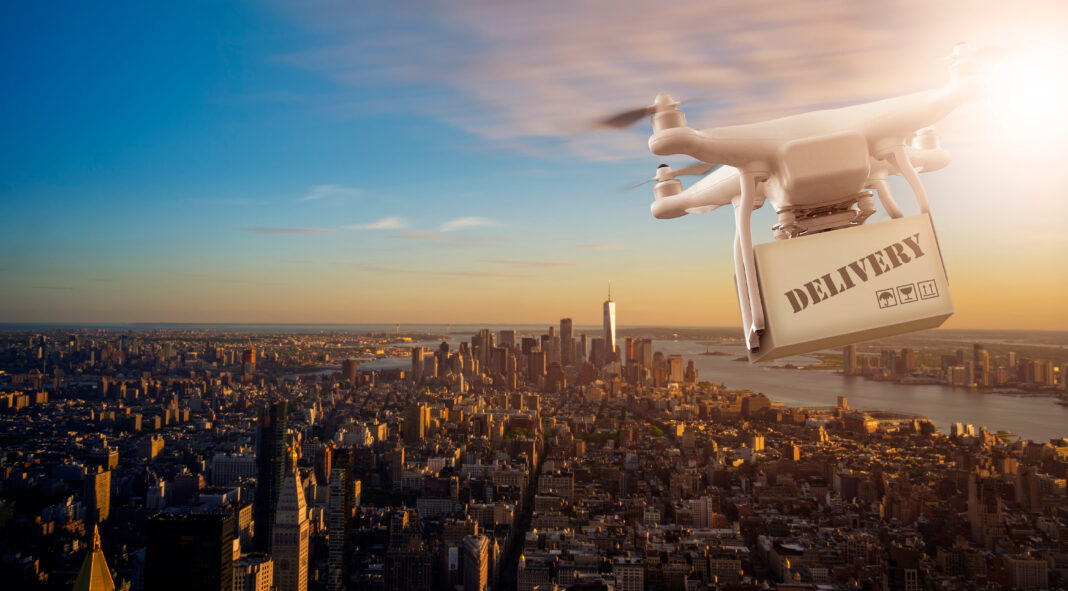How Do Drones Impact Supply Chain Sustainability?
Drone technology is driving a profound transformation in supply chain management. These uncrewed aerial vehicles can streamline logistics operations and increase efficiency, but their impact doesn’t end there. From the warehouse to the last mile, these revolutionary devices provide a more eco-friendly alternative to traditional supply chain processes.
Global Supply Chains Leave a Massive Carbon Footprint
As human-driven climate change continues to dominate headlines, it has become increasingly imperative to implement eco-conscious practices in everyday living. The bulk of this global warming stems from consumer action made possible by domestic and international supply chains.
However, these activities leave undesirable environmental impacts in their wake. According to the World Economic Forum, just eight industry supply chains are responsible for over 50% of global greenhouse gas (GHG) emissions.
Supply chain sustainability is also significant at the organizational level, especially with environmental, social and governance initiatives gaining prominence in corporate management. Rightly so, considering more than 90% of a company’s GHG emissions since 2022 have come from its supply chain.
The biggest culprits are goods transportation and waste management. Every day, planes, ships, trains, trucks and two-wheelers transport millions of items worldwide. The majority of these vehicles run on fossil fuels — currently the biggest risk factor of climate change.
Overproduction and waste generation are also huge ecological concerns. A poignant example is the fast fashion industry, where clothing items’ rapid production and disposal leads to continual resource depletion and pollution.
How Drones Drive Sustainability Across the Value Chain
Integrating drones into supply chain management demonstrates environmental stewardship and promotes corporate social responsibility. These systems deliver several sustainability benefits.
1. Significantly Reduced Emissions
By eliminating reliance on fossil fuels, delivery drones generate a meager 2% of the carbon emissions of a medium-sized diesel truck. Granted, they cannot haul a comparable amount of items, but the dramatic decrease in emissions they deliver makes them viable alternatives worth innovating.
2. Enhanced Waste Reduction
Warehousing inefficiencies and erroneous inventory management are among the leading causes of waste in the supply chain. Simple mistakes when tracking and counting stock magnify the risk of items being discarded because they were delivered to the wrong recipient or their shelf life expired in transit. Drones equipped with sensors and cameras can help streamline warehouse operations by providing real-time data on inventory conditions.
Moreover, these systems can fly over large areas quickly, conducting checks in hard-to-reach locations across the facility. This saves time and reduces the risk of injuries.
3. Minimized Chemical Pesticides
Drones can improve sustainability at the food production level by providing alternative pest control solutions. The agriculture industry often receives flak for its immense carbon footprint, part of which comes from pesticides and other harsh chemicals that damage the ecosystem. Automated flying vehicles can provide 24/7 surveillance over entire fields, swooping in when the sensors detect the presence of pests and small animals.
4. Afforestation and Reforestation
Replenishing depleted habitats is one of the fundamentals of global supply chain sustainability. Drones can quickly fly to remote areas and steep hillsides, scattering seeds across the terrain to promote new plant growth.
5. Optimized Last-Mile Deliveries
The last-mile delivery comprises the last stage of the supply chain — when the product reaches the end consumer. It also happens to be one of the most expensive parts of the process, costing up to 53% of the total shipping cost.
Using drones allows retailers to reduce the time and money they spend on this area. These flying machines avoid road traffic altogether, making them ideal for sustainable same-day and next-day deliveries.
Challenges of Implementing Drones Into the Value Chain
Despite their benefits, drones might still be far from mainstream adoption. Cost remains the primary concern, as these systems can be expensive to purchase and maintain. Advanced rotary drones can cost upwards of $10,000, depending on their specs. Companies must also train staff to operate these machines.
Battery life is another foreseeable challenge. What happens if the drone’s battery gives out halfway through a delivery? These potential complications may limit the efficiency of a drone-enabled supply chain.
Interconnected drones also pose security concerns, as each unit is a possible gateway into the network. These devices hold sensitive information like customer names and addresses, making them prime targets for theft and exploitation.
Nevertheless, the future of global supply chain operations will likely include drones and other innovations. The merits of the technology are too large to ignore and it’s only a matter of time before it makes more business sense to have them than not.
Promote Sustainable Supply Chains
Drones are vital to addressing the global supply chain’s humongous ecological footprint. They deliver many environmental benefits, from lower carbon emissions to waste reduction and sustainable free last-mile deliveries. Industry leaders must closely monitor early adopters such as Amazon and Walmart to determine what further advantages these machines will create.

